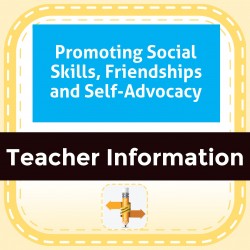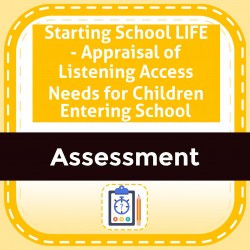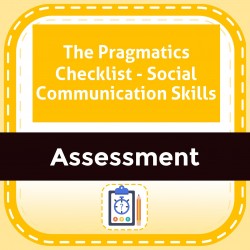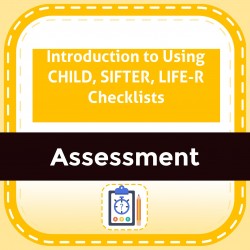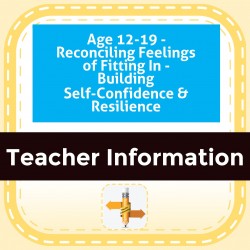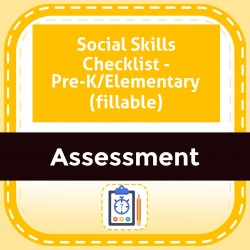Ability Levels
Categories
Resource Types
Age/Grade Range
CCSS
Anchor Standard
Speaking & Listening
Language
Reading
Promoting Social Skills, Friendships and Self-Advocacy
$ 395
This information describes strategies for promoting social skills, friendships and self-advocacy for school-age students who are deaf or hard of hearing. This includes general strategies for teaching
...
social skills, problem-solving, self-advocacy and how to help students deal with stress and academic independence.
Starting School LIFE - Appraisal of Listening Access Needs for Children Entering School
$ 0
The Starting School LIFE - Appraisal of Listening Access Needs for Children Entering School checklist is designed to be completed by families of children transitioning to school at age 3-5 or moving i
...
n to a new school throughout elementary. Families complete the CHILD checklist (S0XASM0063) and other portions of the Starting School LIFE to provide the school with information about listening challenges to assist in planning for access needs in school. Fillable version available at P01ASM0595.
SIFTER - Secondary Screening Identification for Targeting Educational Risk - User's Manual
$ 0
The Screening Instrument For Targeting Educational Risk (SIFTER) was created as a tool to screen the functional performance of students with hearing loss in preschool in preschool, elementary and seco
...
ndary school and includes a scoring grid to identify areas of concern. This User Manual focuses on secondary students and will explain the background, development, validity, effectiveness and reliability of the SIFTER.
The Pragmatics Checklist - Social Communication Skills
$ 0
Checklist to screen for pragmatic language issues ages 2-7. By age 4 years, 43 of 45 items are typically communicated using complex language. Many children with hearing loss are 3 years delayed and co
...
ntinue to use 1-3 words rather than full sentences. There is a version of this checklist available that includes interpretation and intervention information.
SIFTER - Elementary Screening Identification for Targeting Educational Risk - User's Manual
$ 0
The Screening Instrument For Targeting Educational Risk (SIFTER) was created as a tool to screen the functional performance of students with hearing loss in preschool in preschool, elementary and seco
...
ndary school and includes a scoring grid to identify areas of concern. This User Manual will explain the background, development, validity, effectiveness and reliability of the SIFTER.
SIFTER - Secondary Screening Instrument for Targeting Educational Risk
$ 0
The Screening Instrument For Targeting Educational Risk (SIFTER) was created as a tool to screen the functional performance of students with hearing loss in secondary school. It includes a scoring gri
...
d to identify areas of concern. User's manual is at S0XASM0142. Part of the fillable SIFTER Bundle #1289.
Introduction to Using CHILD, SIFTER, LIFE-R Checklists
$ 0
There are a number of checklists that have been a staple in providing support to students with hearing loss by educational audiologists and itinerant teachers of the deaf and hard of hearing. The fol
...
lowing checklists and descriptions are offered to understand how the checklists can be useful in routine practice : Children’s Home Inventory of Listening Difficulty (C.H.I.L.D.), Screening Instrument for Targeting Educational Risk (S.I.F.T.E.R.), Listening Inventory for Education (LIFE-R)
Age 12-19 - Reconciling Feelings of Fitting In - Building Self-Confidence & Resilience
$ 250
For ages 12-19 years: This information addresses feelings of fitting in, problem-solving, social isolation, identity, importance of role models, positive outlook, and dealing with challenges due to he
...
aring loss. The purpose of this book is to raise awareness for the reasons why hearing device rejection happens and specific instruction to occur at different ages to build student resilience and self-confidence, thereby increasing the likelihood that they will not reject using their hearing technology. Specific teaching activities and recommendations for instructional materials to develop identified skills have been included in this Guide.
Social Skills Checklist - Pre-K/Elementary (fillable)
$ 350
Teacher Checklist to rate a young child's social play and emotional devleopment, emotional regulation, social cognition, nonverbal and verbal communication skills. Fillable.
 Your browser is out of date. For best experience switch to latest updated Browser.
Your browser is out of date. For best experience switch to latest updated Browser.
 Get Chrome
Get Chrome Get Edge
Get Edge Get Firefox
Get Firefox